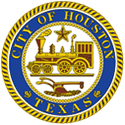Houston Fire Department
Health and Fitness
Medical
Your History & Physical Exam
Did you know that your city insurance pays for you to have an annual physical examination?
Did you know there is little/no copay for the physical, depending on you plan?
- They are looking for tell-tale signs of a possible problem that can be treated early and cured.Simple things like a lump, a sore spot or a continuing pain may alert the staff to a particular diagnosis.
- You should tell the physician about any recent exposures or injuries that may be causing a problem now or later in your career.
- During the exam, the physician, nurse practitioners or physician’s assistant (P.A.) will assess your general state of health.
Lab & Diagnostic Tests
In addition to the physical examination, other tests can be performed like an audiometry (hearing test), urinalysis, a chest x-ray, a pulmonary function test and an electrocardiogram.
All of these tests evaluate how you body is holding up under the stresses of firefighting and the aging process. However, your physician won’t know you’re a firefighter unless you tell them.
Gender Specifics > Cancer-Areas of Concern
Female > Cervical, Breast, and Colon.
Male > Testicular, Prostate, and Colon.
Blood Tests
Blood tests are an essential part of the overall annual physical. There are a number of ranges to fall into to be normal. From a complete blood count (CBC) to liver test such as ALT, AST and Hepatitis C to Cholesterol (HDL, LDL and Triglycerides) to Glucose. They are all tools that can give a hint or sign of toxic exposure, organ damage, disease or many other problems.
A CBC can detect anemia and leukemia. ALT and AST can detect hepatitis and effects of liver toxins including alcohol. Cholesterol testing can determine a risk of heart disease. Glucose testing can detect early signs of diabetes.
Summary of Benefits
Physicals by your primary-care provider may include:
- Historical data from previous physical examinations
- EKG
- Stress Test
- Blood Tests
- Urinalysis
- Vision
- Hearing
- Pulmonary Function
- X-Rays
For information on Mental Health Services, please visit the HFD Mental Health Services Web Page >>>
Immunization and Screenings
Immunizations and screening are provided to any member of the HFD by calling the Communicable Disease office at 832-394-6802. These are also benefits covered under your city insurance plan.
Immunizations:
- Hepatitis A Vaccine
- Hepatitis B Vaccine
- Tetanus/Diphtheria Vaccine
- Flu Vaccine
Screenings:
- TB Skin Test
- Hepatitis B Titer
Are You at Risk?
Major Coronary Risks:
- Elevated Blood Cholesterol Level
- Hypertension
- Cigarette Smoking
- Diabetes Mellitus
- Genetics
- Sedentary Lifestyle
- Age (Men>45, Women>55)
- Obesity
Cholesterol
- Soft, waxy substance found in the blood stream
- Food and Family are both contributors you your cholesterol level
- Cholesterol is found in and essential to your body. But too high of cholesterol can lead to cardiovascular disease, stroke, and heart attack
- Cholesterol and blood are the same as oil and water---they do not mix -It is carried through your body by lipoproteins
What are your cholesterol #'s?
Your doctor or a screening in your community should take a lipoprotein profile
Compare your numbers :
- Total cholesterol: <200; <150 with known cardiac disease
- Triglycerides: <150
- LDL: <130; <70 with known cardiac disease
- HDL: >45 Men; >55 Women
Lowering Cholesterol
DIET, HEALTHY WEIGHT, INCREASED ACTIVITY
Eating foods low in fat is MORE effective than just eliminating cholesterol
- Saturated fats raise cholesterol
- Choose foods with <5 grams total fat,< 3 grams saturated fat, and 0 grams trans fat
- Eat foods high in good fats (olive oil, fish, nuts, etc.) to increase HDL cholesterol
Buy lower fat foods
- Skim or 1% milk; low fat or fat free cheeses, sour cream, salad dressing, and mayonnaise
- Fish and chicken or turkey without the skin; lean cuts of meat instead of fatty meats
- Fruits, vegetables, and grains
Cook with less fat
- Bake, broil, or boil instead of frying in nonstick pans
- Use olive oil or margarine instead of lard, shortening
- Season foods with green pepper, onion, garlic, oregano, or cilantro
- Skim the fat off of cooled soups and gravies with a spoon before reheating
- Goal is <300 mg cholesterol per day
Blood pressure - force of blood pushing against blood vessels
Systolic/Diastolic:
- Normal 130 or less/ 85 or less
- High normal 130 -139/ 85 - 89
- High blood pressure 140 or more /90 or more
- Goal 120/80
Prevention
- Follow a healthy eating pattern
- Maintain a healthy weight
- Be physically active
- Limit ALCOHOL intake
- Stop smoking
Dietary Approach to Stop Hypertension (DASH)
- Eat 5 fruits and vegetable servings per day
- Include high fiber foods (beans, apples, brown rice) and whole grains (wheat breads/pastas, cereals, snacks)
- Low sodium diet (<2 grams)
Smoking
Cigarette smoking increases your risk of dying from coronary heart disease along with increased mortality for a variety of specific diseases.
5 Steps to Quitting
- Prepare yourself - Set a date and stick with it!
- Get a support group - tell friends and family you are quitting
- Change your habits - Get into new routines and try other methods to help relax
- Get medication if needed
- Be prepared for difficult situations
Physical Activity
- Decreases blood glucose levels
- Helps body use food supply
- Improves blood flow
- Burns calories
- Weight maintenance
- Approximately 60 minutes of moderate- to vigorous-intensity activity most days of the week do not exceed caloric intake requirements
- Weight loss - at least 60 to 90 minutes of daily moderate-intensity physical activity do not exceed caloric intake requirements

